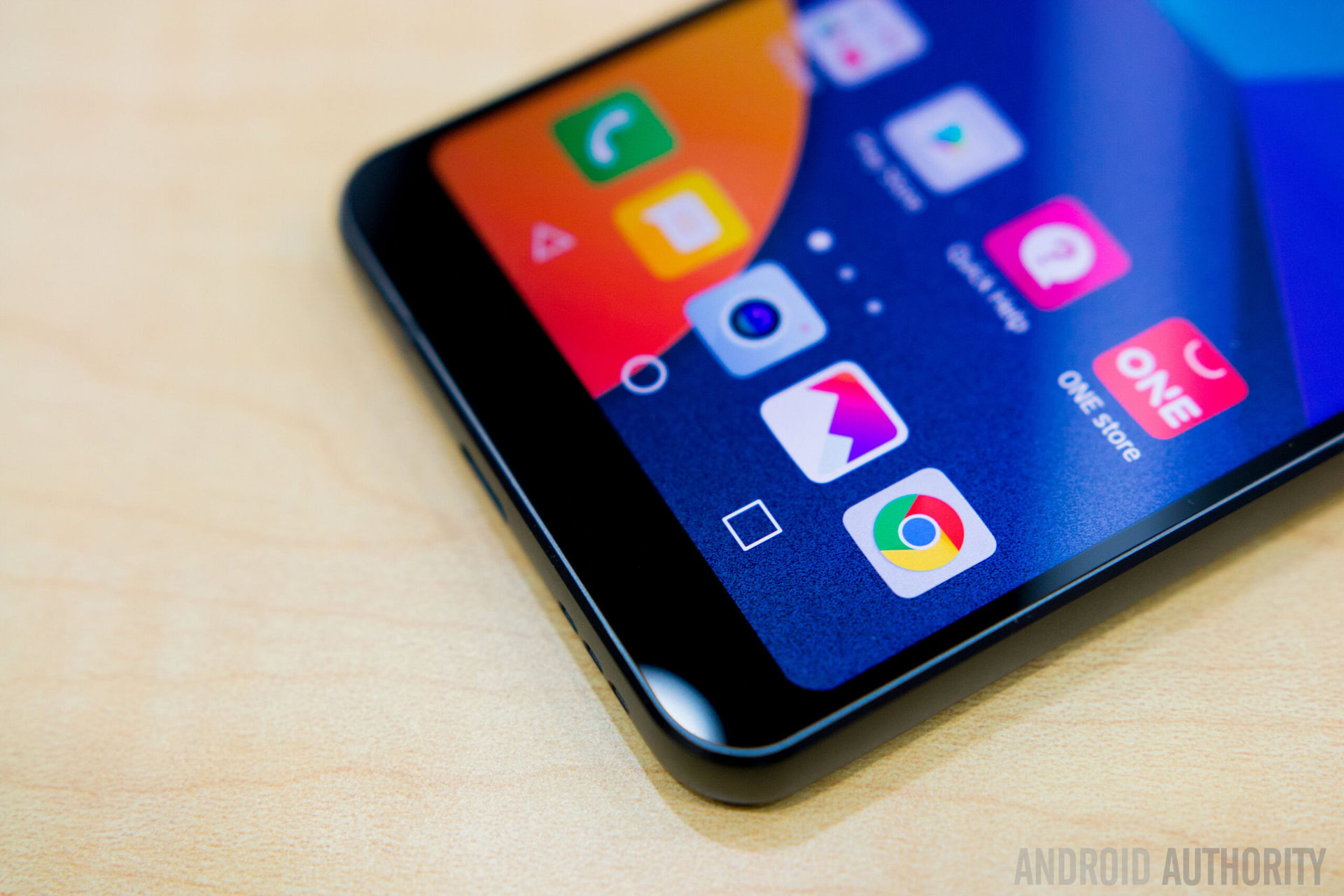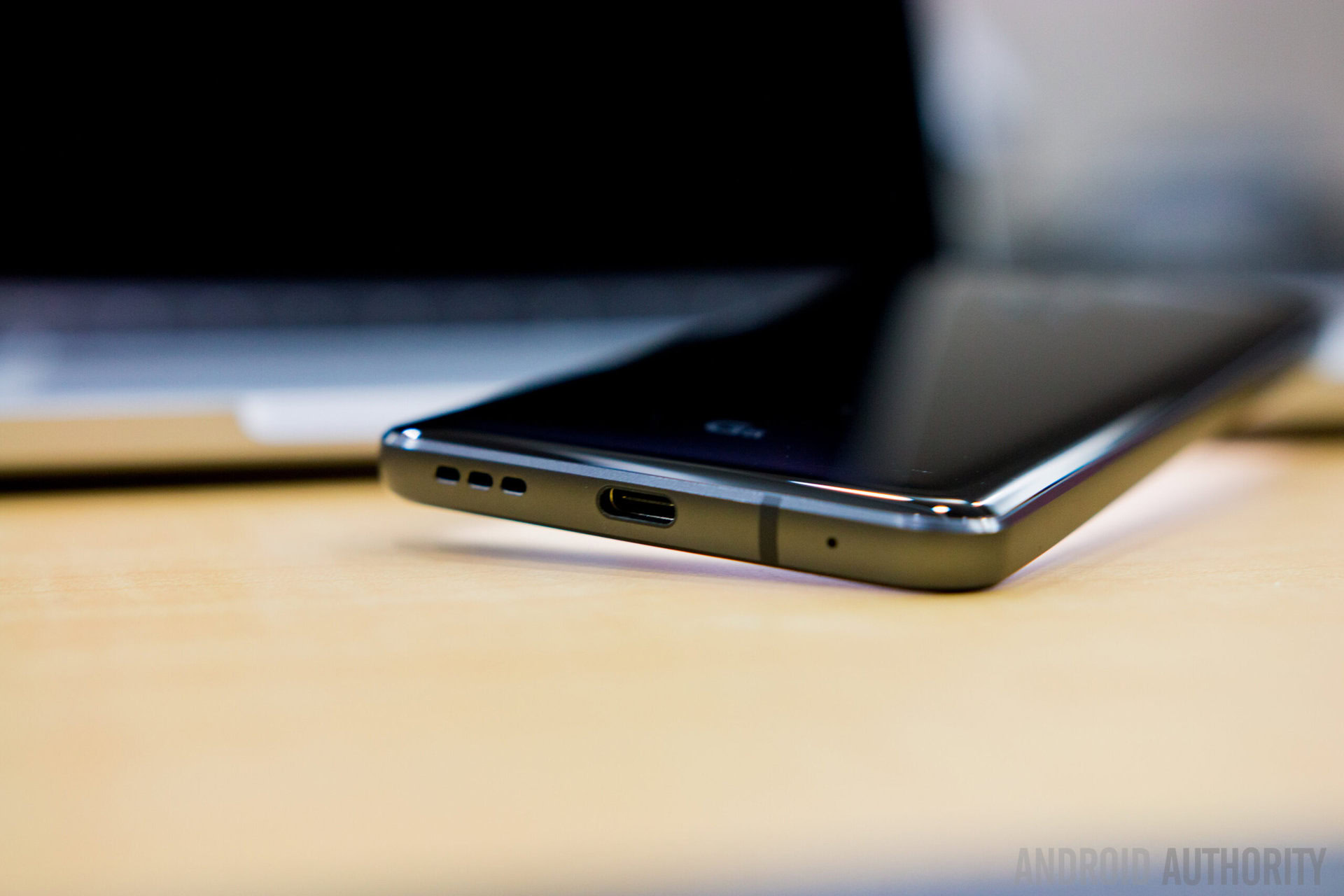Affiliate links on Android Authority may earn us a commission. Learn more.
The LG G6 uses a four year-old version of Gorilla Glass on its display

Bizarrely, the LG G6 apparently uses three different generations of Corning’s Gorilla Glass: Gorilla Glass 3 on the front, Gorilla Glass 4 on the camera and Gorilla Glass 5 – the latest offering from Corning – on the back. So why the mix-and-match? It feels like a blatant cost-cutting measure, but is saving a few bucks on component costs really worth risking that gloriously large G6 display?
We asked LG why it chose to use a Gorilla Glass version first introduced at CES in 2013 on the front of a 2017 flagship and were told it basically boiled down to “thickness”. As a quick history lesson, when Gorilla Glass 3 was introduced four years ago, it was significant because it offered increased flexibility compared to its predecessor as well as a 40 percent increase in scratch resistance.
Gorilla Glass 4 arrived almost two years later, offering a much thinner glass that provided essentially the same durability as Gorilla Glass 3. Gorilla Glass 5 came another year and a half after that, adding improved impact resistance over its predecessor while maintaining a similar level of scratch resistance.
The reason I mention this is because while a combination of Gorilla Glass 4 and 5 might make decent enough sense – say, using 4 on the camera and 5 on the front and back – it’s not so easy to understand LG’s reasoning for using Gorilla Glass 3 on the front of the G6. Scratch resistance may be negligible between all three generations, but 3 is much thicker than 4 and far less resilient than either newer version.
An LG spokesman told me the decision was ultimately left up to the G6 design team and that the choice would have been made based on a number of factors, not just scratch resistance. In some ways, this is reasonable: using Gorilla Glass 4 around the camera area makes sense as its increased flexibility would help avoid cracked camera glass but that piece of glass doesn’t really need enhanced impact resistance.
Using Gorilla Glass 5 on the back then makes a lot of sense, as its superior drop protection – claimed by Corning to be 1.8 times better than its predecessor – is a natural fit. But how are we supposed to understand the choice of a much less durable glass on the front of the display, which is typically the most costly part of a phone to replace? Even the Galaxy Note 7 used Gorilla Glass 5 on both front and back: it just makes sense.

Perhaps the thicker glass is the key, I don’t know. After all, the LG G6 has chamfered corners which apparently decrease the display’s likelihood of damage compared to a normal rectangular corner. Perhaps LG thought there was less need for a super tough protective layer when the G6 already has a much more resilient display? But what good is a stronger display if the “protective” layer on top of it is much more likely to shatter instead?
Just remember that Gorilla Glass 4 is about twice as durable as Gorilla Glass 3. And Gorilla Glass 5 is 1.8 times stronger than Gorilla Glass 4. Do the math and the front of the LG G6 starts to look like the weakest link by a long shot. The weakest link placed on the most crucial part of any phone. I’m sure there’s a decent reason behind the use of Gorilla Glass 3, I sincerely hope there’s a perfectly logical reason for the choice other than saving money, but I’m yet to figure out what it is.
We’ve asked LG for further clarification and will update this post with any additional information we receive.